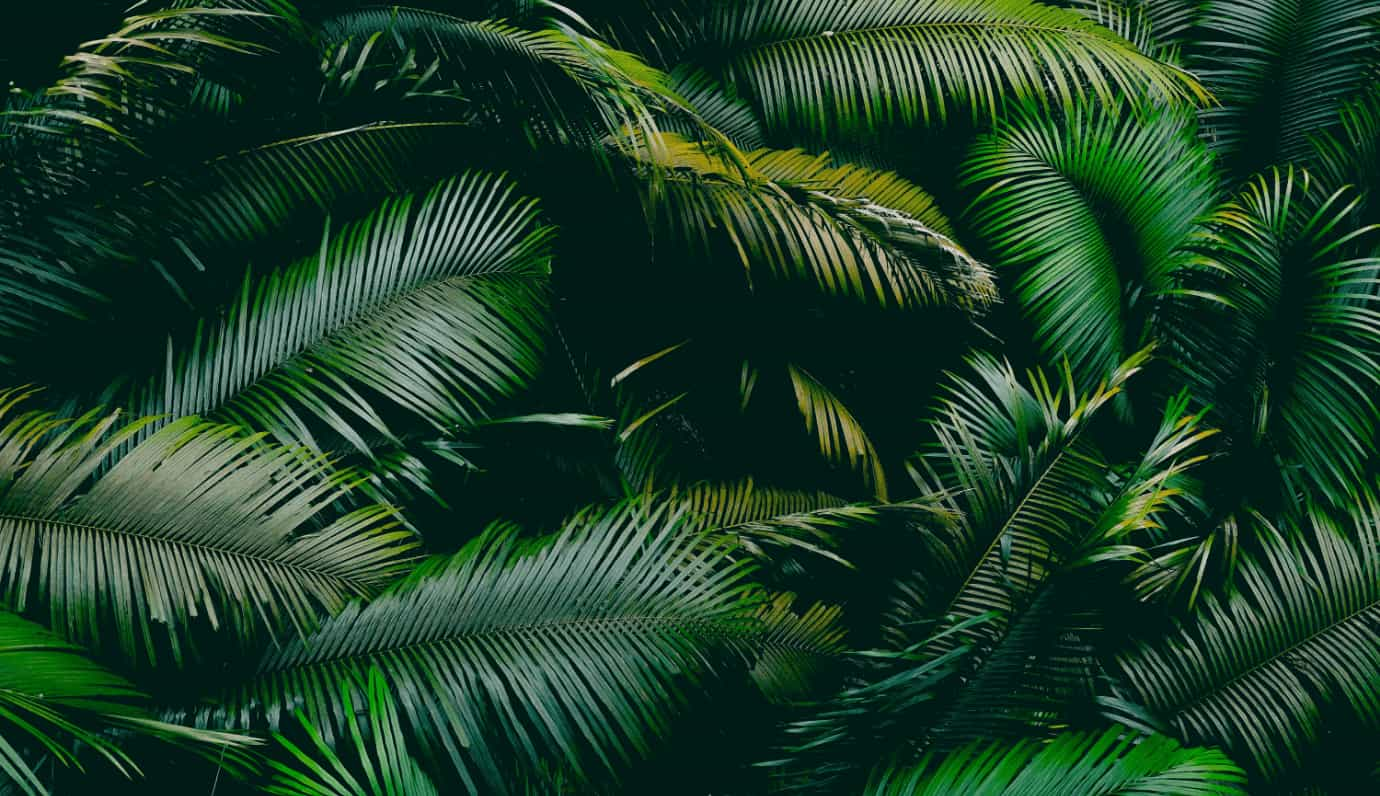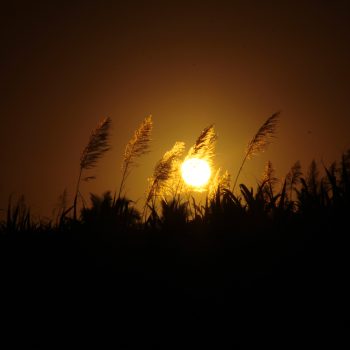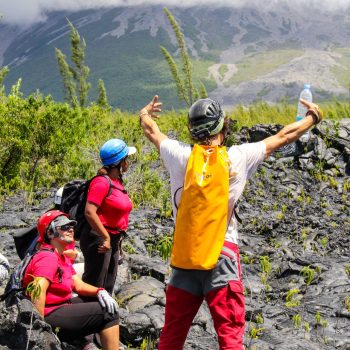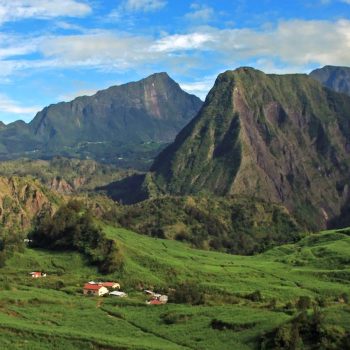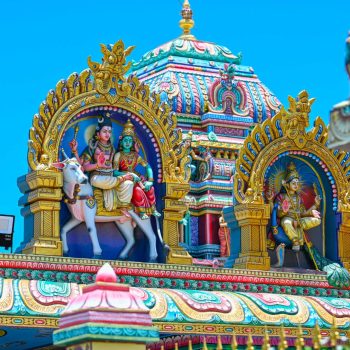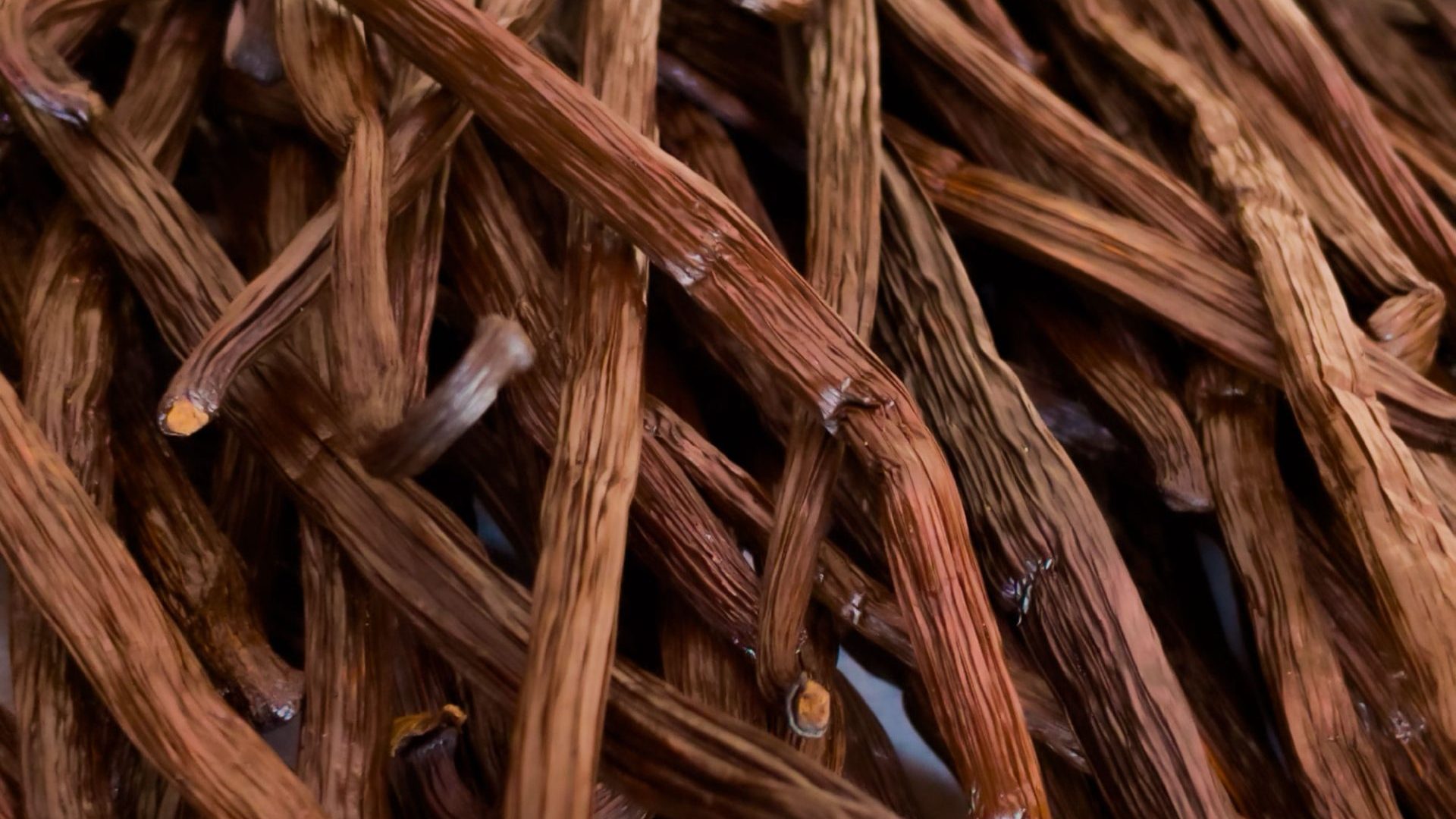Bras-Panon vanilla. There are many ways to enjoy Reunion Island vanilla. A wide range of food and cosmetic products allows everyone to find what they are looking for and to perfume their daily life with a note of sweetness.
On the cosmetic side, there are room fragrances for the home but also eau de toilette and very refined eau de parfum. With delicately sweet and exotic notes, you will certainly have the feeling of being on vacation throughout the day. Soaps, body milks and shower gels complete the range.
In all subtlety, vanilla brings an additional flavor to all your daily preparations. Vanilla sugar invites itself into all your desserts and vanilla fleur de sel sublimates your grilled meats.
Still on the food side, vanilla coffee is also a great success while the traditional vanilla pod and vanilla extract flavor your favorite sweet and savory recipes.
Where to eat Bras-Panon vanilla?
If you don't feel the soul of a great chef but you want to discover this essential dish during your visit to the east of Reunion, go to the Mrs. ANNIBAL's Farm Inn where all the dishes are made from farm products. Treat yourself from appetizer to dessert!
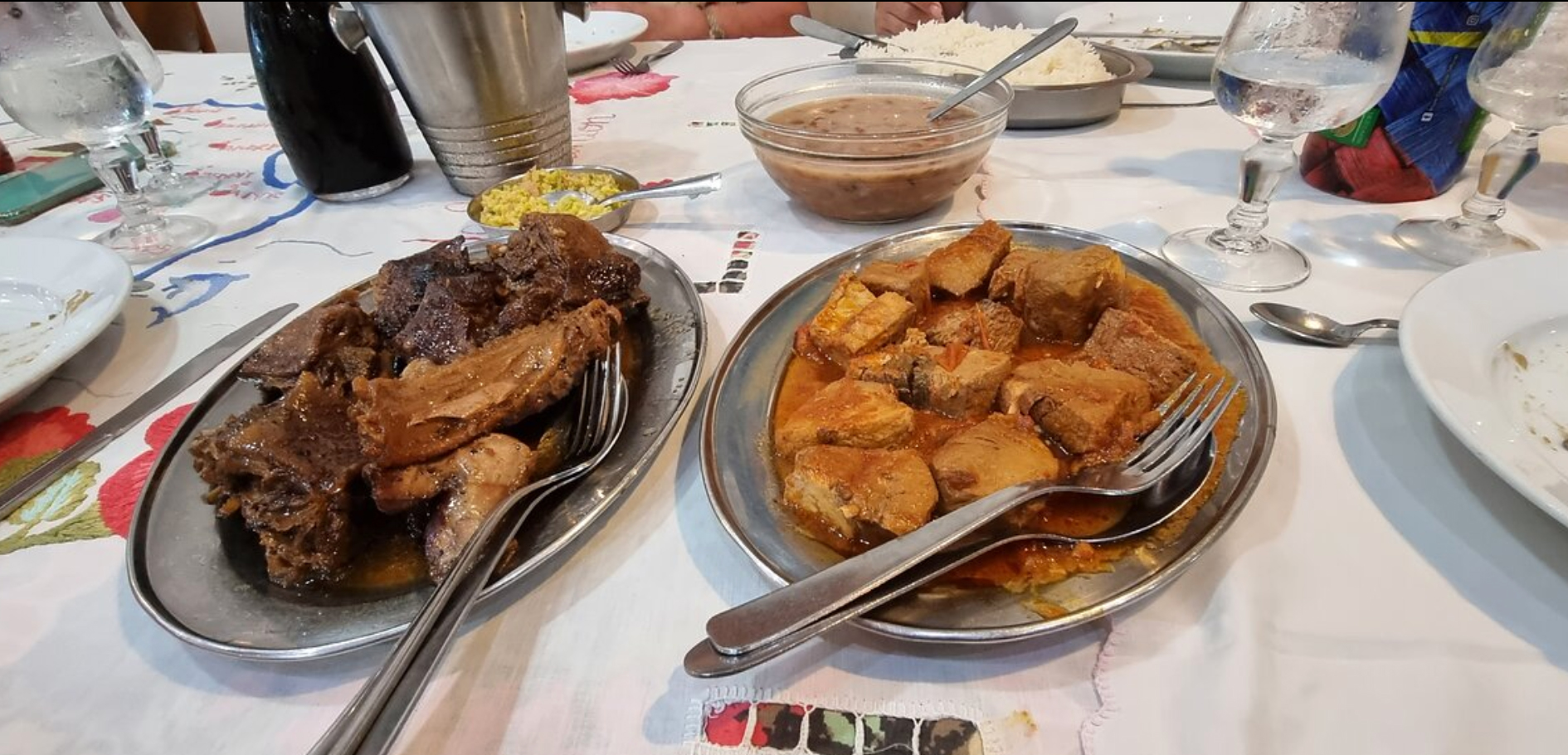
Historical origins of Bras-Panon vanilla
If vanilla from Reunion Island was a pioneer, its origins go back a long way… Vanilla was indeed discovered at the beginning of the XNUMXth century in South America by the Spanish conquerors. The Aztecs mainly used vanilla to flavor cocoa drinks. In the XNUMXth century, the importation into Europe of vanilla pods was a success: they were used to flavor chocolate, sweets, and even tobacco in France.
In the XNUMXth century, many scientists grew the orchid in hot greenhouses to study it. But the cultivation of vanilla remains a mystery: vanilla plants that give pods are very rare. To facilitate fruiting, some botanists then had the idea of cultivating vanilla in a tropical climate close to that of its region of origin in South America. Thus, the first vanilla plants were introduced at the beginning of the XNUMXth century on Bourbon Island – the name of Reunion Island at the time. This is why vanilla from Reunion Island now bears the label “Vanilla bourbon".
1841: a young slave signs the birth certificate of Reunion Island vanilla…
Around the middle of the 1841th century, scientists discovered that the vanilla plant needed an external fertilizing agent, in this case, bees of the Euglossines or Mélipones genus. At the same time on Bourbon Island, Ferreol Beaumont Bellier cultivated vanilla plants out of interest in botany on Reunion Island in his Sainte-Suzanne estate. In XNUMX, a young slave, Edmond Albius, an orphan and taken in as a son by Mr. Beaumont Bellier who introduced him to botany, is at the origin of the discovery which will revolutionize the cultivation of vanilla.
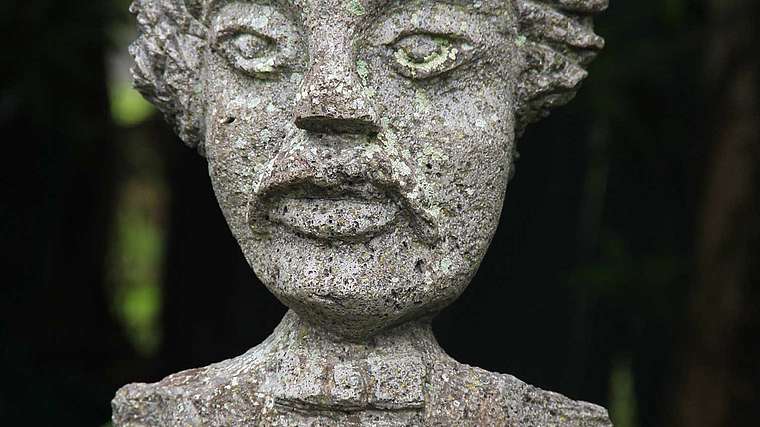
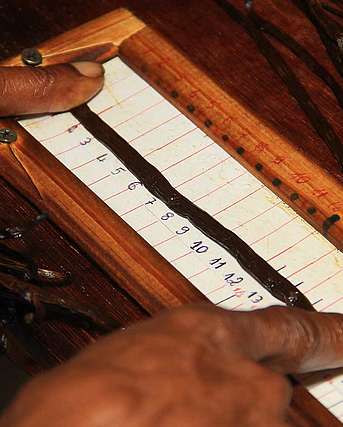
Just squeeze the flower lightly, lifting the movable partition that separates the stamens from the stigmas. This discovery will allow the growth of vanilla cultivation on the island of Reunion, which will be for a time the first exporter of vanilla in the world. The cultivation of vanilla trees well established since its importation into Europe; the fertilization of vanilla flowers discovered on the island of Reunion; the techniques of drying and fermentation of vanilla pods practiced by the Aztecs, all these methods will be introduced to the other islands of the Indian Ocean from Bourbon Island: the Seychelles first, then Madagascar and the Comoros .
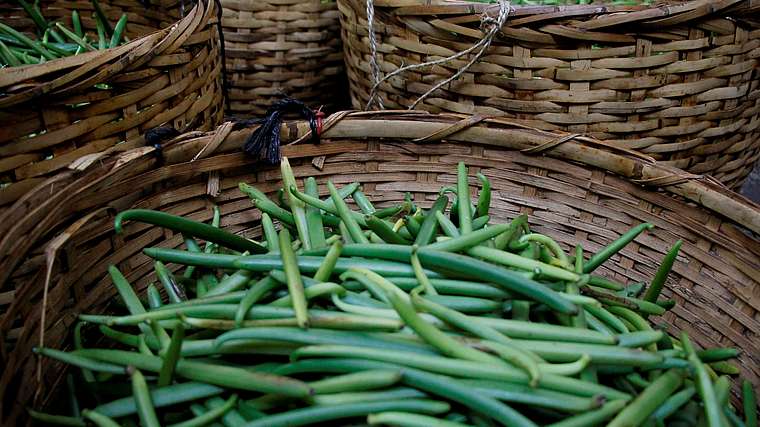
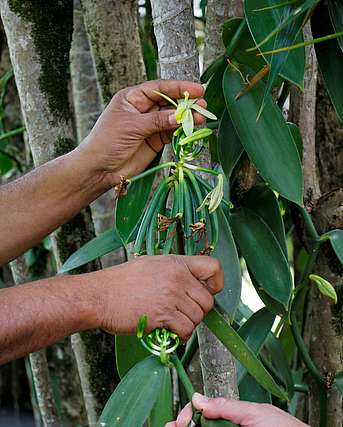
The 1930s: the golden age of Reunion Island vanilla
With 1200 tons, or more than 3/4 of world production, the 1930s were the glory period for vanilla from Reunion Island and other islands in the Indian Ocean, which will retain to this day the name “Vanille Bourbon” in memory of its place of origin!
Witness the coat of arms of the island of Reunion commissioned by the treasurer-paymaster Emile Merwart (former governor and passionate about heraldry) for the colonial exhibition of 1925 in Petite-Ile. There is a vanilla vine that wraps around the motto of the late Compagnie des Indes “Florebo quocumque fairer” (I will bloom where I am carried).
Bras-Panon vanilla today: know-how inspired by tradition
Nowadays, the preparation of vanilla from Reunion Island has hardly changed since the experiments and the optimization of the process by the Reunionese Ernest Loupy and David de Floris.
Here are the different steps:
- Mortification by scalding,
- Fermentation, which gives the vanilla pods their brown color, starts during steaming,
- Drying, in the sun daily for 2 to 3 weeks first, then in the shade on racks, which stops the fermentation,
- The vanilla pods are then grouped into bundles of the same length and stored for 2 to 3 months in airtight boxes. They then acquire their very high concentration of aroma

